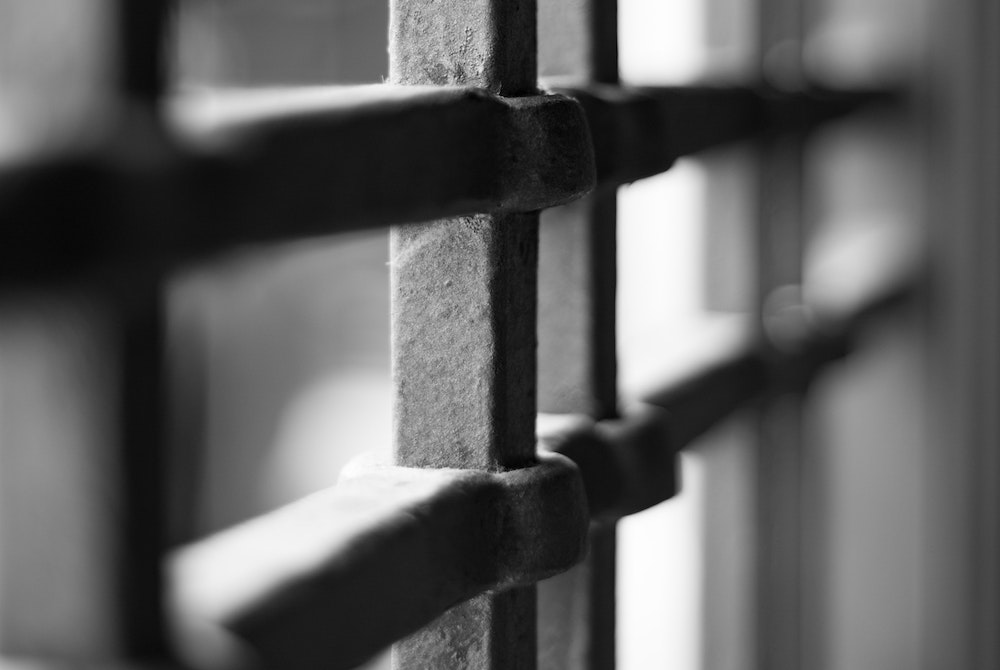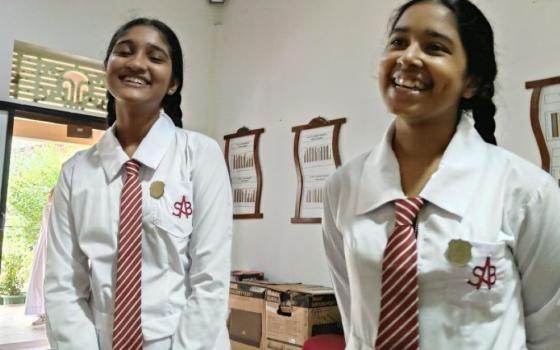
In 2018, there were 40,000 solitary confinement sanctions in New York state, including about 30,000 in special housing units (SHU) and another 10,000 keep-lock sanctions where people are confined to their cells for up to 23 hours per day, according to a report by the New York Civil Liberties Union. (Unsplash/Marco Chilese)
He used to imagine he was in a park, sitting by the water, basking in the sunlight.
In reality, Victor Pate was in solitary confinement — alone in a 6-by-9-foot prison cell with no windows, the fluorescent lights flickering harshly around the clock.
All around him, he could hear other men screaming, crying, wailing — calling for help. It wasn't long before he started seeing things, hearing voices that weren't there.
"Some people never come back from the voices," Pate said during a Jan. 24 webinar hosted by the metro New York branch of the Catholic social justice group Call to Action. "Some people never come back from the hallucinations."
After his release, Pate became an organizer with the New York Campaign for Alternatives to Isolated Confinement, hoping to impose limits on the practice he and other advocates describe as torture.
The legislation Pate and his comrades are working towards, called the Humane Alternatives to Long-Term (HALT) Solitary Confinement Act, would limit isolated confinement to 15 consecutive days or 20 days total within a 60-day span. It would also ban solitary for people under 21 or over 55, people who are pregnant or nursing, and people with physical or mental disabilities.
It would also raise the bar for being removed from the general prison population and create alternatives to solitary for those who are removed from the general population for more than 15 days.
Call to Action's metro New York chapter has called on its members to write to Gov. Andrew Cuomo and other state lawmakers to ask for their support for the HALT bill.
"We have hundreds of thousands of brothers and sisters pulled into the criminal justice system and incarcerated because of the color of their skin," the group said in a statement. "While in prison they are subjected to the torture of solitary confinement."
Advertisement
In 2018, there were 40,000 solitary confinement sanctions in New York state, including about 30,000 in special housing units (SHU) and another 10,000 keep-lock sanctions where people are confined to their cells for up to 23 hours per day, according to a report by the New York Civil Liberties Union. The average length of a single stint in SHU is 105 days, but more than 130 people were sent to SHU for a year or more.
Black and Latino people and those with mental illness are disproportionately punished with isolation, according to the report, exacerbating pre-existing disparities in the criminal legal system.
In 2018, Black people made up 18% of the New York state population but 48% of the prison population. In October 2019, 57% of the people in solitary were Black, according to the report.
International law, established by the United Nations, prohibits prolonged solitary confinement (isolation over 22 hours per day) for more than 15 days at a time and considers this practice a form of torture. The U.N. has also outlawed solitary confinement for people with mental illness.
In February 2020, a U.N. human rights report raised concerns about the use of solitary confinement in U.S. prisons and jails.
"There seems to be a State-sanctioned policy aimed at purposefully inflicting severe pain or suffering, physical or mental, which may well amount to torture," said Nils Melzer, U.N. Special Rapporteur on torture, in the report.
Jerome Wright, an organizer with the Western New York Campaign for Alternatives to Isolated Confinement, survived a total of seven and a half years in solitary confinement, including a stint of two and a half consecutive years. He said during the pandemic, many people have felt the crushing isolation of quarantine, driving many to risk their own lives and the lives of others to be around people.
The Rev. Laura Markle Downton, director of the U.S. Prisons Policy and Program at the National Religious Campaign Against Torture, is pictured in a replica solitary confinement cell during the Ecumenical Advocacy Days event in 2015. (CNS/Courtesy Perisphere Media/Erin Schaff)
"But you only got a scintilla, an iota," he said in the webinar. "Exponentially multiply that terrible loneliness, the despair, the desperation that you felt ... in a 6-by-9 cell with nothing but a bed and a toilet-sink combination for 23 to 24 hours a day. That's what we're talking about."
Nobody is directly sentenced to solitary confinement, he said; rather, people are sent there by correctional officers for any number of alleged infractions.
He said his torturous experiences of solitary confinement began when he was grabbed by guards and marched to the SHU in handcuffs. Once, the guards tightened the handcuffs so much his wedding ring had to be cut off because his fingers swelled from lack of circulation, he said.
Then he was strip searched, which he described as a humiliating process where one wrong move could trigger violent reprisals from guards.
"Even if you comply, you're sweating, you're scared, you're cold, you're naked -- for no reason," Wright said. "All this is to traumatize and let you know: 'We are in control. Your life is in our hands. Nobody can see, hear, or do anything — you can call for your mama like George Floyd did, you can call for Jesus. But you belong to us.' "
Isolation causes intense psychological distress and trauma, Dr. Stuart Grassian, a psychologist who taught at Harvard Medical School for over 30 years, said during the webinar.
"What makes us human is … the want and the need to interact with each other," Wright said. "The greatest punishment you could give a man, woman or child is to ignore them or ostracize them. And solitary confinement does both."
Grassian said people in solitary sometimes go into a mental fog or delirium. Other times, they become laser focused on negative thoughts to the point of paranoia.
"We got people committing self mutilation, just so that a human face could show up in front of their cell and minister to them," Wright said, "So that they can be taken out of the cell to the doctor, bleeding and hurting, just so they can feel human again."
A 2020 report by the New York Campaign for Alternatives to Isolated Confinement found that between 2015 and 2019, the suicide rate for people in solitary confinement was more than five times the rate for the rest of the New York prison population.
Upon release, many people who have done time in solitary have post-traumatic stress disorder and other psychological conditions caused by the trauma of isolation, Grassian said. Some become loners, easily overstimulated by people and noises.
Wright said traumatizing and abusing people will not help them change their behavior for the better.
"You treat them like an animal," he said. "You give them no therapy, you give no education, give no jobs, give no transitional services, no mental health treatment or therapy, no religious services — you give them nothing. And then you expect them to come out of that situation and comport themselves like John Q. Citizen."
Grassian said solitary does not make prisons safer for those inside. Nor does it increase safety for people on the outside, he said, and it costs taxpayers "a hell of a lot of money" for a punishment that ends up harming both the person who is incarcerated and their community.
"When you think you're getting tough on crime, you're really getting tough on the community," Grassian said.
Organizers said they hoped the HALT bill would curb the use of solitary in New York state. Grassian noted that the practice has been controversial for decades. In 1890, he said, the Supreme Court criticized the practice of solitary confinement in a case called In Re Medley.
In the court's majority opinion, Justice Samuel Miller called solitary confinement "painful" and noted that some people subjected to it killed themselves and that others emerged too traumatized to function in society.
"This is how far back it goes that we knew solitary confinement was toxic … we have come a long way downhill from there," Grassian said.
Wright and Pate said the fight to reduce solitary confinement in New York and elsewhere requires the whole community to pitch in.
"[Solitary confinement] is an abomination," Wright said. "And it's got to stop, and it's got to stop now."






